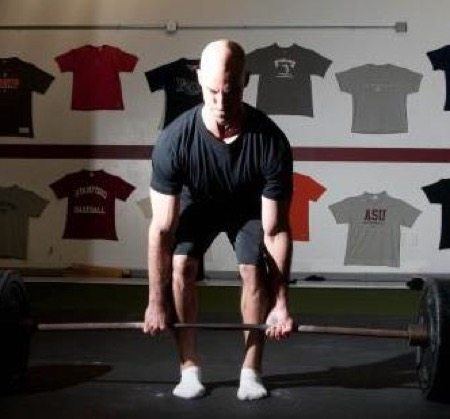Many people have called the deadlift, “the king of all exercises.” And rightfully so, as there may not be a bigger bang-for-your-buck exercise out there.
In my opinion, the deadlift is the most underutilized exercise in rehabilitation. Perhaps the move is intimidating? Perhaps people are afraid of barbells? Perhaps people are worried patients may hurt their backs? Perhaps rehab professionals don’t know enough about strength and conditioning?
I always say that I am a much better physical therapist because I am also a strength coach, and always keep learning from many great strength coaches.
As the gap between rehab and performance continues to narrow, the deadlift may be the final exercise to cross the chasm. We shouldn’t be afraid of the deadlift, however, we also need to understand the the conventional deadlift is not for everyone.
Why Everyone Should Deadlift

The deadlift is essentially a hip hinge pattern, which is extremely functional and equally elusive for many people.
Put simply, people can’t hinge anymore! It’s amazing.
As our society changes and relies more on poor posture patterns, prolonged seated periods, and things like excessive use of smartphones, I’m amazed how it seems even kids can’t touch their toes anymore.
Working on a poor hip hinge pattern is extremely helpful for so many different issues that I see every day. From back pain, to knee pain, to even poor sport performance.
We have become so anterior chain dominant. Luckily, the deadlift hits the entire posterior chain in one big lift.
So the the deadlift really helps with the hip hinge pattern, but there are so many other benefits including working on better posture, glute development, lower extremity power development, a stronger core, stronger lats, and even enhanced grip strength.
You can see why it’s such a big bang-for-your-buck exercise.
Why Everyone Shouldn’t Deadlift
Wait a minute…
I just spent the first half talking about how beneficial the deadlift is for so many people. Why shouldn’t everyone perform a deadlift?
Let me clarify – I’m talking about the conventional barbell deadlift.
Take a step back and remember that we are more concerned about movements, than muscles, right? So luckily there are many variations of hinging, and even deadlifts, that can be utilized to achieve all the above great goals.
Perhaps the deadlift is so underutilized in the rehab setting because everyone just looks at the conventional barbell deadlift. That’s like going straight to the top, saying that there is no way you can perform that exercise, then just scrapping all forms of deadlifts and hip hinge exercises.
Most people that walk into the door at Champion have no chance at being successful at a conventional barbell deadlift. Among other things, you need:
- Good mobility
- An understanding of the hinge pattern neuromuscular pattern
- The ability to load, essentially lift a weight with intent
Most people don’t have at least 2-3 of these qualities.
We’ll try to get them there with the right blend of mobility drills, corrective exercises, and manual therapy, but that doesn’t mean we have to wait to start deadlifting. We just need to start at a more regressed level.
So, don’t immediately scrap the deadlift, find a way to incorporate it. Work within your mobility and limited range, try a variation using a kettlebell or sumo stance, and use submaximal loads until you can groove a proper hip hinge pattern.
One of my favorite resources on deadlift technique and variations is this excellent article by Mike Robertson.
As you improve, you can incorporate more advanced forms of the deadlift, but don’t simply scrap the deadlift until then, modify!
3 Ways to Modify a Deadlift so Anyone Can Perform
If you want to learn more, I have an Inner Circle webinar on 3 Ways to Modify the Deadlift so Anyone Can Perform. In this presentation, I break down the 3 most common reasons why people often don’t perform a deadlift, the inability to load, poor hinge patterns, and altered hip anatomy. Deadlifts are great, and really underutilized in rehab, but with these 3 modifications, anyone should be able to perform them.
To access this webinar:
- Inner Circle members click here to access the webinar
- Learn how to access this webinar and much more in my online Inner Circle Mentorship program






